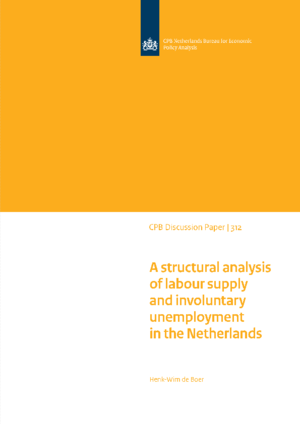A structural analysis of labour supply and involuntary unemployment in the Netherlands

We estimate both models for four groups separately: singles without children, single parents, couples without children and couples with children. We use information on job search behaviour to estimate the determinants of involuntary unemployment. We find that average labour supply elasticities are only slightly lower in the model with involuntary unemployment than in the model without involuntary unemploy- ment. The main reason for this small bias is the relatively small share of individuals who are involuntary unemployed in the period 2006-2009. A simulation of tax-benefit reforms confirms that the upward bias in average labour supply responses is limited in the model without involuntary unemployment. Only for subgroups with a high risk of being involuntary unemployed, such as lower educated individuals and immigrants, we find a relatively large upward bias in labour supply elasticities in the model without involuntary unemployment.
